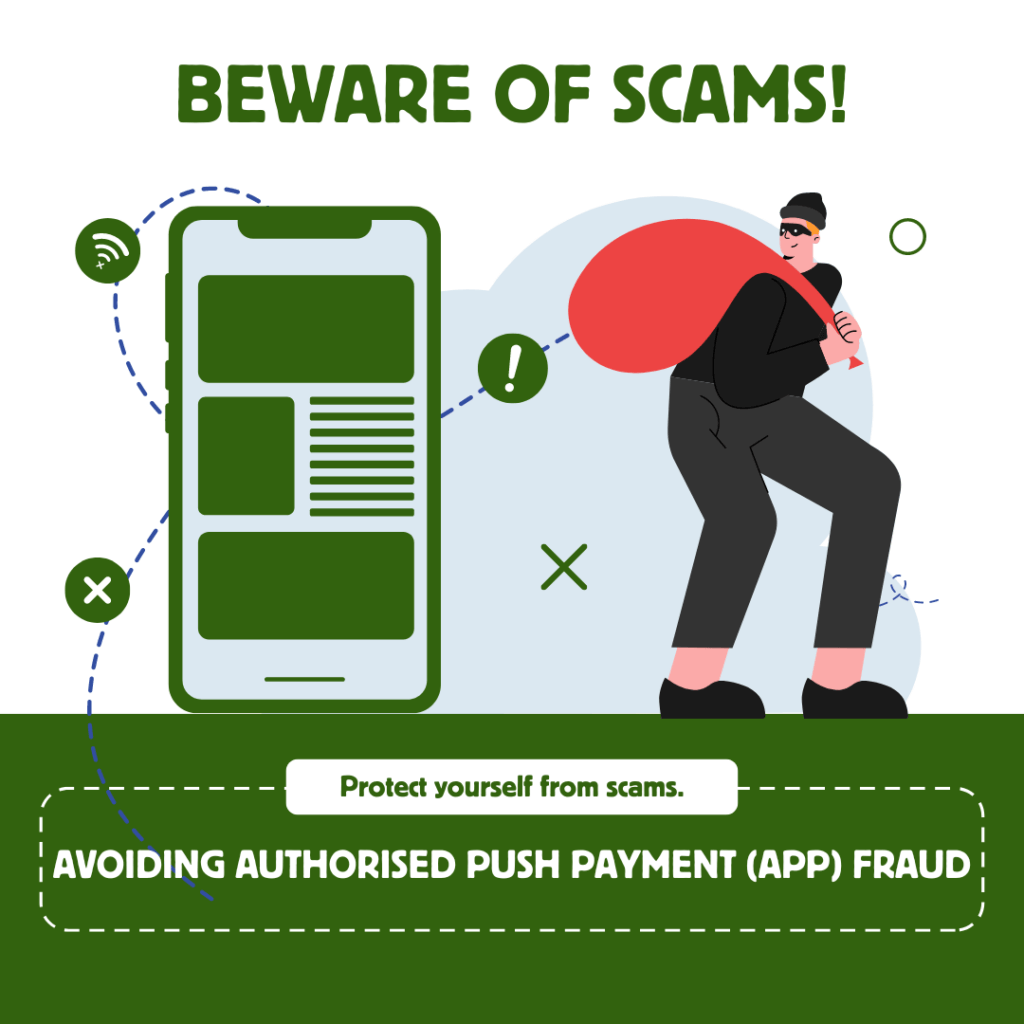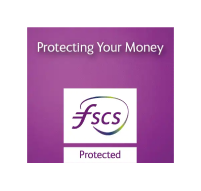Avoiding Authorised Push Payment (APP) Fraud

Fraudsters are constantly trying to find new ways to catch you out.
One of the latest schemes, is Authorised Push Payment (APP) fraud.
APP fraud tries to trick you into making or approving a payment that you believe is going to the account of a genuine person or business. Once you have sent the money, it can be very hard to get it back.
So How Does APP Fraud Work?
The fraudsters will often pretend to be someone that you believe you can trust, such as a bank or building society representative, someone supplying you with goods, or even a family member.
They often contact you in such a way as to create a sense of urgency – suggesting you must act quickly in order to avoid problems. This kind of approach can lead victims to act and send money without taking their normal (or necessary) precautions.
Some types of APP fraud include:
Impersonation fraud:
The scammer pretends to be from your bank, building society, or some other authority in whom you place your trust, to convince you to send money to them.
Invoice fraud:
The scammer pretends to be from a business that you already know, asking you to pay funds into a different bank account to the normal account that you are already familiar with.
Romance scams:
In this scenario, a fraudster pretends to form a personal relationship with you online, building your trust, but with the intent of tricking you into sending money to them.
Investment fraud:
You are convinced to invest in a scheme that seems attractive to you as it offers high returns. In reality the scheme is fake, and simply a means of getting hold of your money.
How Can You Protect Yourself?
Whenever you are asked to part with your money, before doing so, think twice – reflect and consider the following:
Pause and Verify:
When asked to make a payment, take your time to think about it, especially if the request seems urgent. Always check the request by contacting the person or business directly using a trusted phone number or email address.
Be Wary of Unexpected Requests:
If you receive a call, email, or message asking for personal or payment information, be cautious. Scammers often try to hurry you into making a quick decision.
Double-Check Payment Details:
Before sending money, use a separate method to confirm the payment details with the person or company you think you are paying. Scammers often change account details or send fake invoices – these may seem real and often appear convincing at first glance – don’t find out too late that they are not!
Report Suspicious Activity:
If something feels wrong or you think that you have been targeted, then trust your instincts and contact your bank or building society immediately. They can help stop any further payments and to investigate fraudulent activity.
Changes coming in on Monday 7 October 2024 could provide additional protection if you use Faster Payments or CHAPS to make transfers. If you’re unsure about whether your banking provider uses these methods, please check with them.
We’ll bring you more updates in the weeks ahead. In the meantime, visit Take Five – a national campaign offering straightforward impartial advice that helps prevent email, phone-based and online fraud – particularly where criminals impersonate trusted organisations.
If you think you’ve been a victim of fraud or a scam, please let us know as soon as possible. You can contact us using the details below:
Email: [email protected]
Tel: 01535 650770
We’re open Monday to Friday (except bank holidays) between 9am to 5pm only. We only process payments within these times so there’s no risk of money leaving your account outside of these times.
If you think you’ve been a victim of fraud or a scam outside of these times you should still let us know using the contact details above. We’ll contact you as soon as possible within our opening hours.

